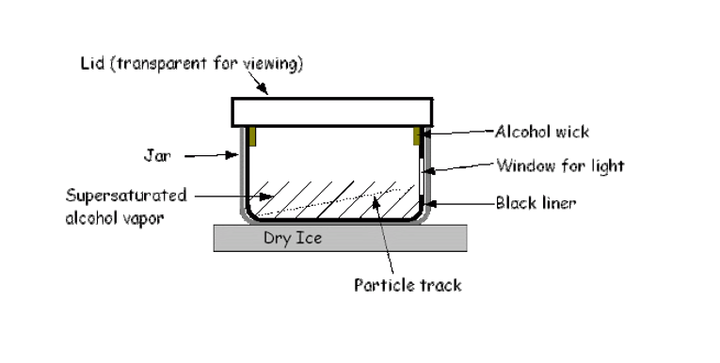Radiation detection by the cloud chamber

Cloud Chamber
Radioactive elements continually undergo a process of radioactive decay during which their nuclei emit high-speed particles and rays. These are much too small to be seen under a microscope. cloud chamber is a particle detector used for visualizing the passage of ionizing radiation and was invented by an English physicist, C. T. R. Wilson, in 1911. It is an instrument designed for the study of the trails of radioactive emissions. It consists of a sealed environment containing a supersaturated vapor of water or alcohol.
An energetic charged particle (for example, an alpha or beta particle) interacts with the gaseous mixture by knocking electrons off gas molecules via electrostatic forces during collisions, resulting in a trail of ionized gas particles. The resulting ions act as condensation centers around which a mist-like trail of small droplets form if the gas mixture is at the point of condensation. These droplets are visible as a “cloud” track that persists for several seconds while the droplets fall through the vapor. These tracks have characteristic shapes. For example, an alpha particle track is thick and straight, while an electron track is wispy and shows more evidence of deflections by collisions.